Recurrent Neural Networks (RNNs): A Comprehensive Guide
Recurrent neural networks (RNNs) are a powerful type of artificial neural network (ANN) used in applications like Apple's Siri and Google's voice search. Their unique ability to retain past inputs through internal memory makes them ideal for tasks such as stock price prediction, text generation, transcription, and machine translation. Unlike traditional neural networks where inputs and outputs are independent, RNN outputs depend on previous elements in a sequence. Furthermore, RNNs share parameters across network layers, optimizing weight and bias adjustments during gradient descent.

The diagram above illustrates a basic RNN. In a stock price forecasting scenario using data like [45, 56, 45, 49, 50,...], each input (X0 to Xt) incorporates past values. For instance, X0 would be 45, X1 would be 56, and these values contribute to predicting the next sequence element.
How RNNs Function
In RNNs, information cycles through a loop, making the output a function of both the current and previous inputs.
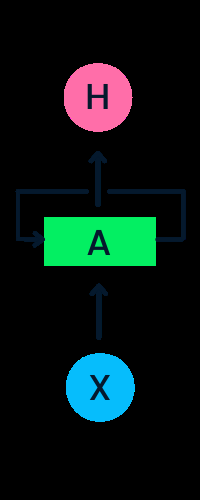
The input layer (X) processes the initial input, passing it to the middle layer (A), which comprises multiple hidden layers with activation functions, weights, and biases. These parameters are shared across the hidden layer, creating a single looped layer instead of multiple distinct layers. RNNs employ backpropagation through time (BPTT) instead of traditional backpropagation to compute gradients. BPTT sums errors at each time step due to the shared parameters.
Types of RNNs
RNNs offer flexibility in input and output lengths, unlike feedforward networks with single inputs and outputs. This adaptability allows RNNs to handle diverse tasks, including music generation, sentiment analysis, and machine translation. Four main types exist:
- One-to-one: A simple neural network suitable for single input/output problems.
- One-to-many: Processes a single input to generate multiple outputs (e.g., image captioning).
- Many-to-one: Takes multiple inputs to predict a single output (e.g., sentiment classification).
- Many-to-many: Handles multiple inputs and outputs (e.g., machine translation).
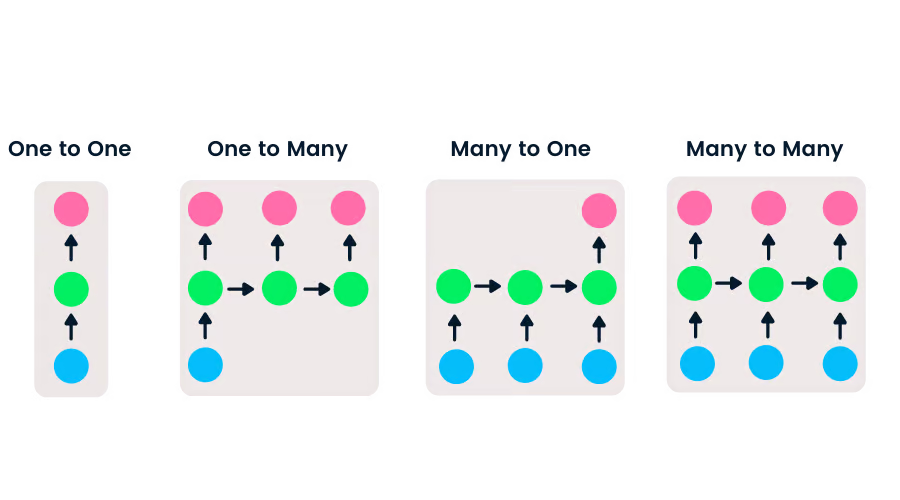
Recommended Machine Learning Courses
Learn more about RNNs for language modeling
Explore Introduction to Deep Learning in Python
CNNs vs. RNNs
Convolutional neural networks (CNNs) are feedforward networks processing spatial data (like images), commonly used in computer vision. Simple neural networks struggle with image pixel dependencies, while CNNs, with their convolutional, ReLU, pooling, and fully connected layers, excel in this area.

Key Differences:
- CNNs handle sparse data (images), while RNNs manage time series and sequential data.
- CNNs use standard backpropagation, RNNs use BPTT.
- CNNs have finite inputs/outputs; RNNs are flexible.
- CNNs are feedforward; RNNs use loops for sequential data.
- CNNs are used for image/video processing; RNNs for speech/text analysis.
RNN Limitations
Simple RNNs face two primary challenges related to gradients:
- Vanishing Gradient: Gradients become too small, hindering parameter updates and learning.
- Exploding Gradient: Gradients become excessively large, causing model instability and longer training times.
Solutions include reducing hidden layers or using advanced architectures like LSTM and GRU.
Advanced RNN Architectures
Simple RNNs suffer from short-term memory limitations. LSTM and GRU address this by enabling the retention of information over extended periods.
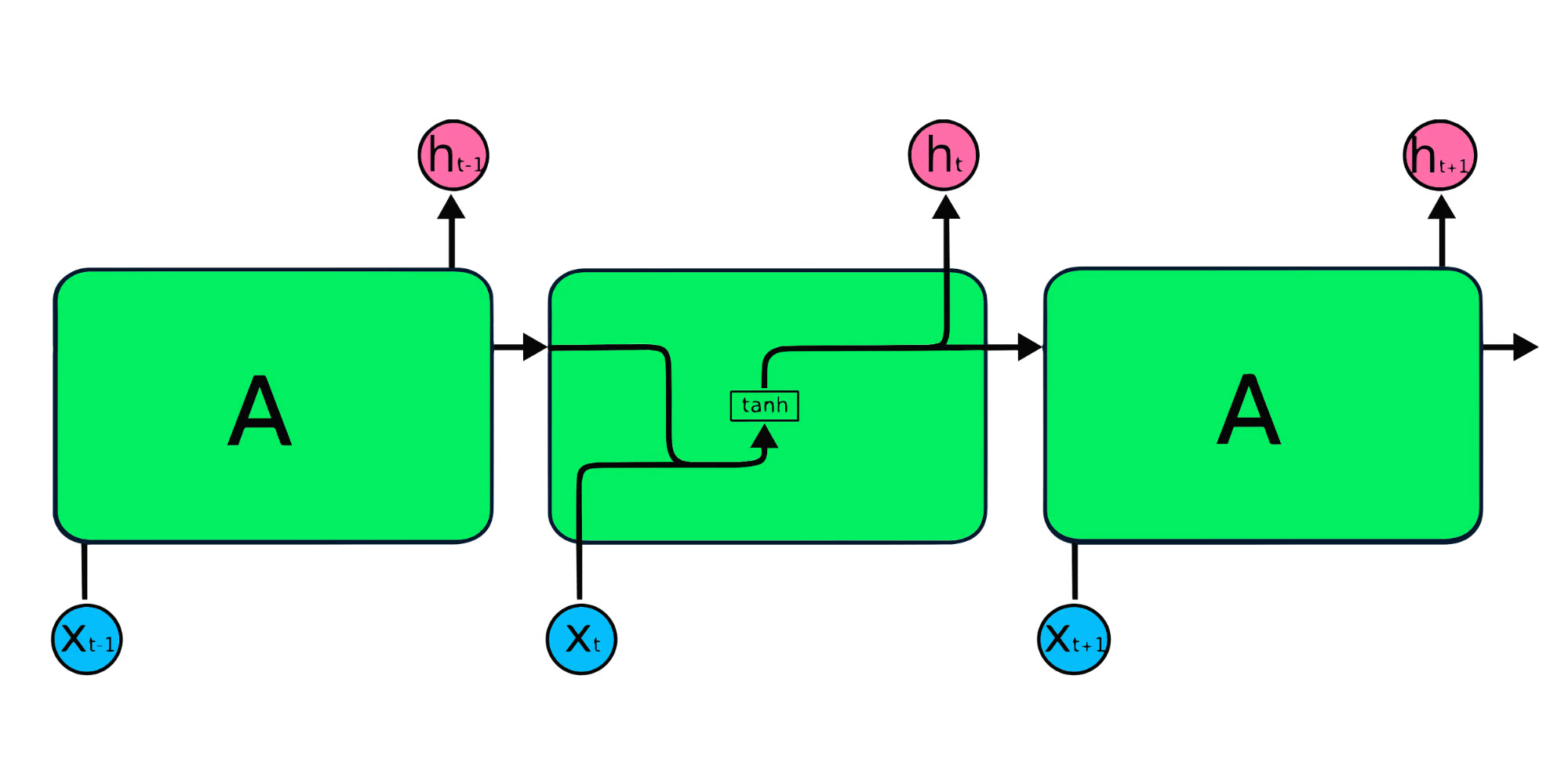
- Long Short-Term Memory (LSTM): An advanced RNN designed to mitigate vanishing/exploding gradients. Its four interacting layers facilitate long-term memory retention, making it suitable for machine translation, speech synthesis, and more.
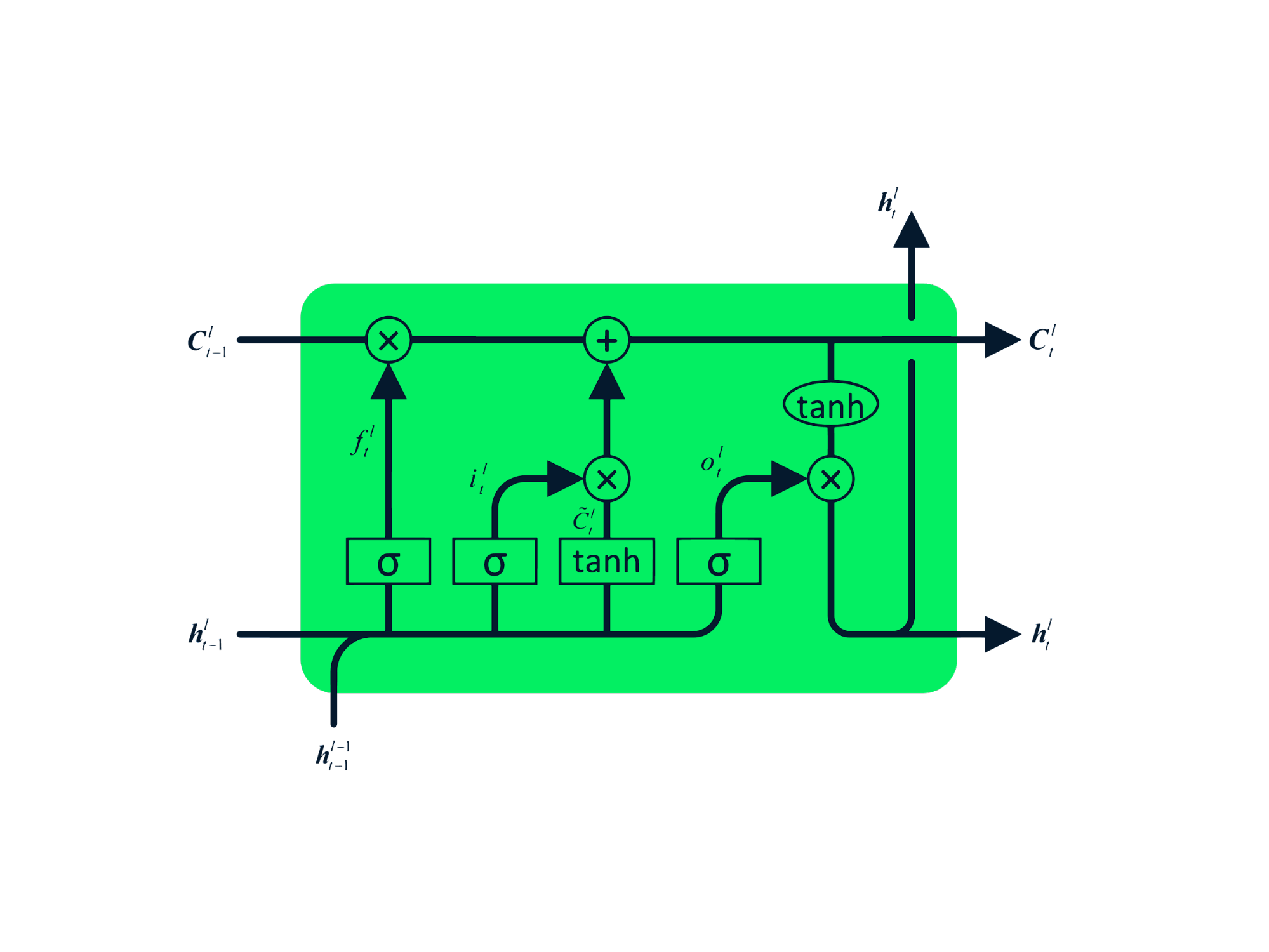
- Gated Recurrent Unit (GRU): A simpler variation of LSTM, using update and reset gates to manage information flow. Its streamlined architecture often leads to faster training compared to LSTM.
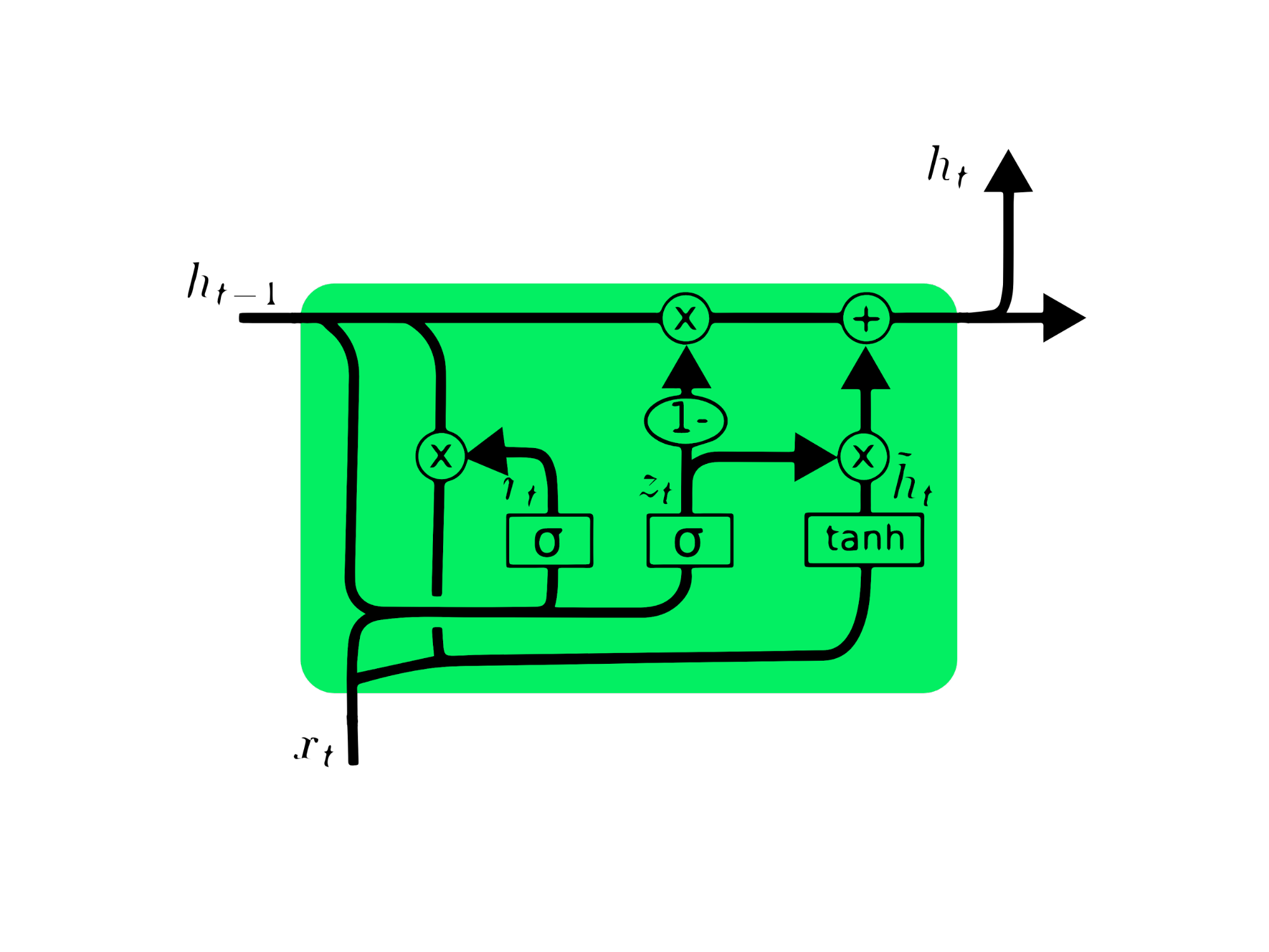
MasterCard Stock Price Prediction Using LSTM & GRU
This section details a project using LSTM and GRU to predict MasterCard stock prices. The code utilizes libraries like Pandas, NumPy, Matplotlib, scikit-learn, and TensorFlow.
(The detailed code example from the original input is omitted here for brevity. The core steps are summarized below.)
- Data Analysis: Import and clean the MasterCard stock dataset.
-
Data Preprocessing: Split the data into training and testing sets, scale using
MinMaxScaler, and reshape for model input. - LSTM Model: Build and train an LSTM model.
- LSTM Results: Evaluate the LSTM model's performance using RMSE.
- GRU Model: Build and train a GRU model with similar architecture.
- GRU Results: Evaluate the GRU model's performance using RMSE.
- Conclusion: Compare the performance of LSTM and GRU models.

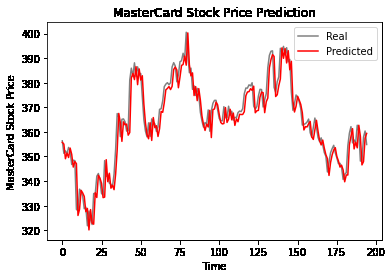
Conclusion
Hybrid CNN-RNN networks are increasingly used for tasks requiring both spatial and temporal understanding. This tutorial provided a foundational understanding of RNNs, their limitations, and solutions offered by advanced architectures like LSTM and GRU. The project demonstrated the application of LSTM and GRU for stock price prediction, highlighting GRU's superior performance in this specific case. The complete project is available on the DataCamp workspace.
Remember to replace http://www.miracleart.cn/link/cc6a6632b380f3f6a1c54b1222cd96c2 and http://www.miracleart.cn/link/8708107b2ff5de15d0244471ae041fdb with actual links to the relevant courses. The image URLs are assumed to be correct and accessible.
The above is the detailed content of Recurrent Neural Network Tutorial (RNN). For more information, please follow other related articles on the PHP Chinese website!

Hot AI Tools

Undress AI Tool
Undress images for free

Undresser.AI Undress
AI-powered app for creating realistic nude photos

AI Clothes Remover
Online AI tool for removing clothes from photos.

Clothoff.io
AI clothes remover

Video Face Swap
Swap faces in any video effortlessly with our completely free AI face swap tool!

Hot Article

Hot Tools

Notepad++7.3.1
Easy-to-use and free code editor

SublimeText3 Chinese version
Chinese version, very easy to use

Zend Studio 13.0.1
Powerful PHP integrated development environment

Dreamweaver CS6
Visual web development tools

SublimeText3 Mac version
God-level code editing software (SublimeText3)
 Kimi K2: The Most Powerful Open-Source Agentic Model
Jul 12, 2025 am 09:16 AM
Kimi K2: The Most Powerful Open-Source Agentic Model
Jul 12, 2025 am 09:16 AM
Remember the flood of open-source Chinese models that disrupted the GenAI industry earlier this year? While DeepSeek took most of the headlines, Kimi K1.5 was one of the prominent names in the list. And the model was quite cool.
 Grok 4 vs Claude 4: Which is Better?
Jul 12, 2025 am 09:37 AM
Grok 4 vs Claude 4: Which is Better?
Jul 12, 2025 am 09:37 AM
By mid-2025, the AI “arms race” is heating up, and xAI and Anthropic have both released their flagship models, Grok 4 and Claude 4. These two models are at opposite ends of the design philosophy and deployment platform, yet they
 10 Amazing Humanoid Robots Already Walking Among Us Today
Jul 16, 2025 am 11:12 AM
10 Amazing Humanoid Robots Already Walking Among Us Today
Jul 16, 2025 am 11:12 AM
But we probably won’t have to wait even 10 years to see one. In fact, what could be considered the first wave of truly useful, human-like machines is already here. Recent years have seen a number of prototypes and production models stepping out of t
 Context Engineering is the 'New' Prompt Engineering
Jul 12, 2025 am 09:33 AM
Context Engineering is the 'New' Prompt Engineering
Jul 12, 2025 am 09:33 AM
Until the previous year, prompt engineering was regarded a crucial skill for interacting with large language models (LLMs). Recently, however, LLMs have significantly advanced in their reasoning and comprehension abilities. Naturally, our expectation
 Build a LangChain Fitness Coach: Your AI Personal Trainer
Jul 05, 2025 am 09:06 AM
Build a LangChain Fitness Coach: Your AI Personal Trainer
Jul 05, 2025 am 09:06 AM
Many individuals hit the gym with passion and believe they are on the right path to achieving their fitness goals. But the results aren’t there due to poor diet planning and a lack of direction. Hiring a personal trainer al
 6 Tasks Manus AI Can Do in Minutes
Jul 06, 2025 am 09:29 AM
6 Tasks Manus AI Can Do in Minutes
Jul 06, 2025 am 09:29 AM
I am sure you must know about the general AI agent, Manus. It was launched a few months ago, and over the months, they have added several new features to their system. Now, you can generate videos, create websites, and do much mo
 Leia's Immersity Mobile App Brings 3D Depth To Everyday Photos
Jul 09, 2025 am 11:17 AM
Leia's Immersity Mobile App Brings 3D Depth To Everyday Photos
Jul 09, 2025 am 11:17 AM
Built on Leia’s proprietary Neural Depth Engine, the app processes still images and adds natural depth along with simulated motion—such as pans, zooms, and parallax effects—to create short video reels that give the impression of stepping into the sce
 What Are The 7 Types Of AI Agents?
Jul 11, 2025 am 11:08 AM
What Are The 7 Types Of AI Agents?
Jul 11, 2025 am 11:08 AM
Picture something sophisticated, such as an AI engine ready to give detailed feedback on a new clothing collection from Milan, or automatic market analysis for a business operating worldwide, or intelligent systems managing a large vehicle fleet.The






